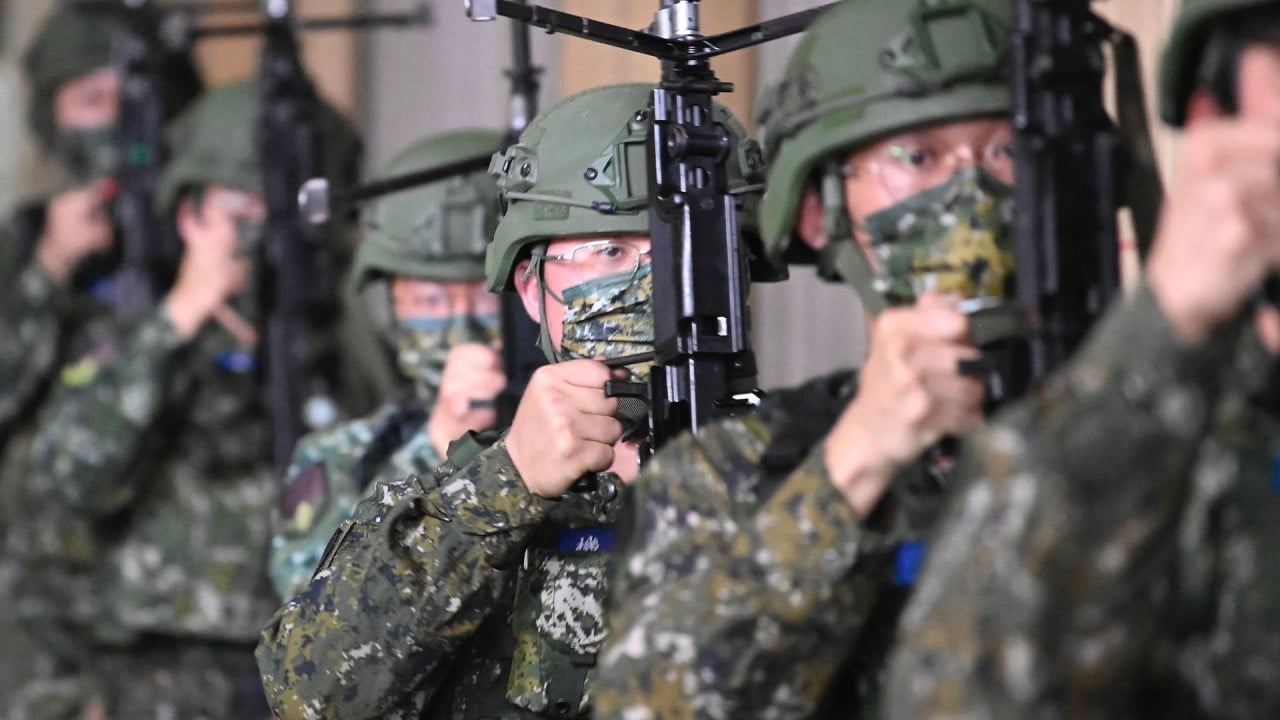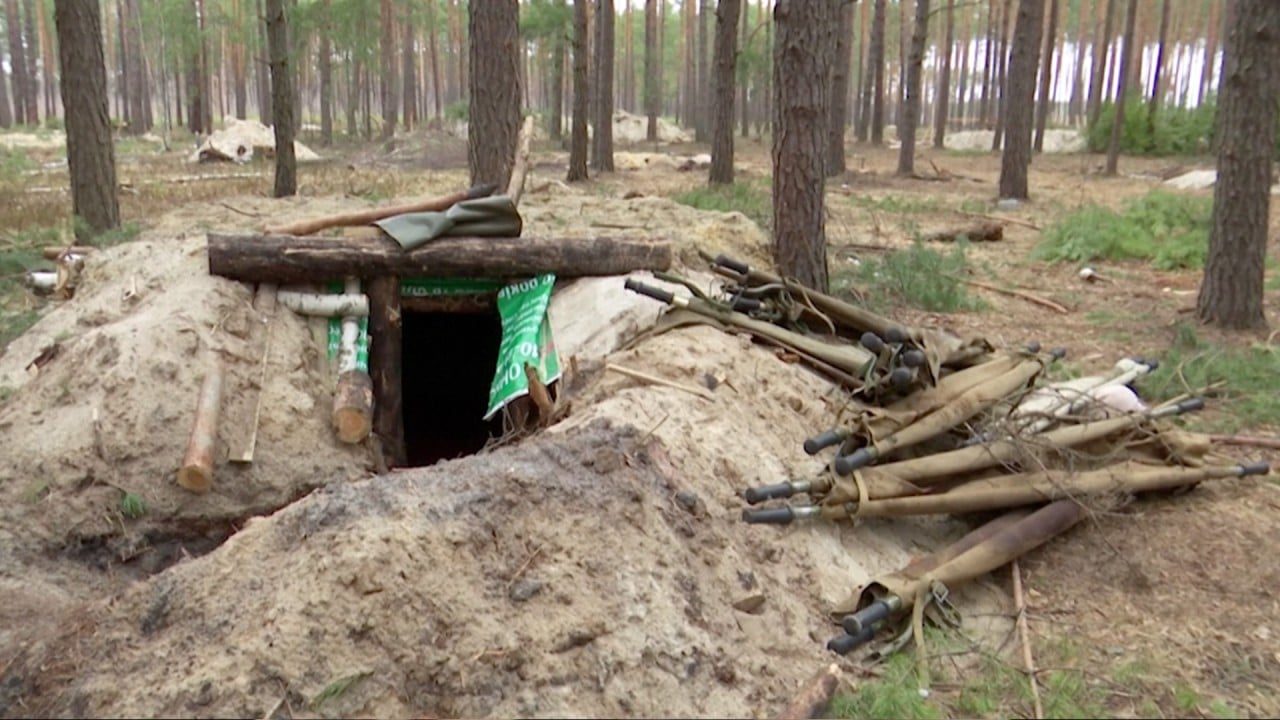
Russian missteps in Ukraine offer China lessons in better military strategy, stronger troop morale
- With a history of military mentorship by Moscow and the use of Russian hardware, the PLA’s biggest takeaway should be humility, says one expert
- Another conclusion China could draw: redouble the commitment to expand its nuclear arsenal to counter US leverage
As militaries worldwide study Moscow’s invasion of Ukraine for lessons in modern warfare, the PLA is paying particular attention, experts say, given its reliance on Russian military hardware and lack of recent fighting experience – something it hopes to redress through deployments in hostile terrain like the Himalayas.
“The starting point is that Russia has been one of the models for China’s military reforms,” said Phillip Saunders, director of the Centre for the Study of Chinese Military Affairs at the National Defence University in Washington. “There are lessons and questions. Why was Russia so bad and will China do better?”
While it will take years for the world’s largest military to fully absorb lessons from Ukraine, experts cite several takeaways expected to either drive PLA changes or vindicate continuing reforms. These include its “using the enemy to train the troops” strategy in places such as Aksai Chin, where at least four Chinese soldiers and 20 Indians died in a 2020 skirmish.
“They’ve been acting as though they’re ready to go to war … You have the sword of Damocles over you that someone might shoot,” said Dennis Blasko, an independent analyst and author of The Chinese Army Today. “In Aksai Chin, they’ve really dug in and they’ve done it seriously.”
Beyond hardening troops, battle experience and casualties tend to shake up vested interests and military bureaucracy. “When someone’s shooting back at you, you learn a whole lot faster,” Blasko said.
China last “tasted blood” in 1979 during its one-month Vietnam invasion and has held only limited exercises in recent years. While Russia does not deserve much credit, analysts said, it has held large-scale exercises and prosecuted four wars in recent decades.
China-India border row: a year after Galwan, mistrust clouds peace prospects
Another lesson China could draw: redouble the commitment to expand its nuclear arsenal to counter US leverage and intimidation, having watched Moscow give Nato pause by threatening tactical strikes.
Last week, the Kremlin repeated its threat should Sweden and Finland join the Western military alliance.
China will have 1,000 nuclear weapons by 2030, up from 400 today, the Pentagon estimates.
“One conclusion that China might draw, that’s reinforced, is that nuclear deterrence can enable conventional military conflict and limit escalation by major powers,” said John Culver, an East Asia expert and former CIA official. “China is no longer just a limited nuclear power with a minimal deterrence capability.”
China’s primary, long-standing military contingency plan is an invasion of self-governing Taiwan, which it considers a renegade province.
The events in Ukraine could push off any attack on Taiwan as Beijing sees just how much can go wrong with an invasion, underscoring China’s need for more time to realise President Xi Jinping’s pledge to “fully modernise” the PLA by 2027 and create a “world class” fighting force by 2049.
“This probably enhances deterrence in the short run because they’ll have to go back to the drawing board” on any Taiwan invasion, said Michael Hunzeker, an assistant professor at George Mason University in Virginia. “They’re unlikely to make the same mistakes, so Russia did them a favour.”
An amphibious assault required in a Taiwan attack would be inordinately more complicated than Russia’s land invasion – analysts point to the 1944 D-Day landings in Normandy – requiring coordinated sea, land and air units across 160km (100 miles) of water onto mountainous territory.
China has struggled to integrate its land, sea and air branches, with military reforms delayed by strong resistance from the army, traditionally the largest and most powerful unit.
Aware of its shortcomings, China has invested heavily in Yushen-class amphibious assault ships, Yuzhao-class landing platforms, dual-use civilian ferries and stronger marine forces.

China is also expected to closely study Russia’s rather puzzling failure to knock out Ukrainian communication networks and its use of unsecured channels, including cellphones.
Likewise, China will parse Moscow’s tepid use of artillery and air power to “soften up” Ukrainians. Moscow reportedly fired just 600 missiles during the first two weeks of the war, a number China would likely fire on the first day of any attack.
Beijing is also expected to draw lessons on better masking invasion plans. An apparently overconfident Russia did little to hide how it was deploying the 150,000 troops massed on Ukraine’s border, allowing Ukrainians – aided by US intelligence – to gain insight into the unfolding attack.
Taiwan’s ageing tanks to get an upgrade to boost defences against PLA
Possible approaches, experts said, included: “flooding the zone” by moving large numbers of troops in all directions to sow confusion, or using false-flag operations or attacks staged by fifth-column forces, giving Beijing a pretext to respond.
One advantage China has relative to Russia would be its ability to surround Taiwan, checking allied efforts to resupply the island with weapons and food, unlike the flood of supplies entering Ukraine from Poland and other Nato neighbours.
That said, a naval blockade and artillery assault would likely kill and injure many more civilians than a land-based invasion given the difficulty of escaping from an island.
China sees itself as more capable than Russia has proven in Ukraine, according to analysts, although virtually every army thinks itself well prepared before the fighting starts.
“The Chinese don’t know how well their people will perform,” said Dov Zakheim, a fellow at the research and analysis group CNA and an undersecretary of defence in the George W Bush administration. “The last time they fought was 1979.”
Other “what not to do” takeaways involve logistics after Russia’s advances repeatedly stalled over shortages of fuel, food and ammunition. As part of its 2015 modernisation, the PLA created a centralised logistics force, but it is structured along domestic lines, which could impair overseas operations.
And China, like Moscow, must worry about corruption. Reports suggest expired food, faulty smart weapons and fuel shortages – dubbed the Russian military’s “second currency” – have stemmed from embezzlement.
In 2020, the watchdog Transparency International ranked Russia’s military corruption index as “high”, citing weak oversight of budgets and procurement.
While Xi has waged repeated anti-corruption campaigns, including within the PLA, corruption is often more endemic in autocratic systems without independent media or watchdogs.
What would happen if mainland China cut off Taiwan’s energy supplies?
In 2015, a PLA newspaper commentary claimed corruption was being brushed under the carpet, citing Chinese military logistics operations. Some 13,000 PLA officers, including 100 generals, have been punished for bribery since Xi took power, according to the Pentagon.
Another early takeaway in Ukraine is the effectiveness of asymmetric warfare, as relatively inexpensive drones, surface-to-air, anti-tank and anti-ship missiles wielded by relatively untrained Ukrainians wreak havoc on large, heavy Russian equipment.
A case in point was last week’s humiliating loss of Russia’s Black Sea flagship, the Moskva, reportedly involving a truck-mounted Neptune missile fired by Ukraine.
China’s handheld HJ-12 and PF-98 anti-tank weapons are well regarded, and footage of burned-out Russian tanks could accelerate their deployment, even as the PLA grapples with its own vulnerability to asymmetric attack. “Now they may be thinking, let’s get that bad boy into our force a lot quicker,” Blasko said.

Taiwan’s Ministry of National Defence (MND) has resisted decentralised asymmetric “porcupine” strategies involving handheld weapons and citizen defence forces, although the Ukrainian example could overcome bureaucratic resistance.
Another key lesson is the importance of morale, discipline and mental preparation amid early reports of Russians troops surrendering, breaking down in tears and brutally attacking civilians.
China is, again, expected to do better in the event of a Taiwan attack, given long-standing propaganda campaigns and political officers in the PLA ranks.
Also unknown is whether the Taiwanese would defend the island as aggressively as Ukrainians have behind President Volodymyr Zelensky. “Who in the world would have thought this of Zelensky? Sometimes the moment makes the leader,” said Hunzeker, who served with the US Marines in Iraq.
Another factor is the PLA’s military draft. Chinese troops are conscripted and serve up to twice as long as Russia’s, leaving them better prepared, and they also are better treated. But the PLA still struggles to enlist over 400,000 troops annually, and many lack a high school education.
Taiwan’s defence ministry reveals extent of US military cooperation
Most Western nations, in contrast, have all-volunteer, professional armies whose members choose to join, which is seen as better for morale.
But China could prove adept at quelling any street fighting after a Taiwan invasion given its experience with mass surveillance and squashing civilian protest.
“This is one thing China does really well,” said Zack Cooper, an American Enterprise Institute fellow. “When it comes to controlling the urban environment, they may feel more confident.”
While Russia’s performance in Ukraine is likely to engender feelings of superiority in PLA ranks, it also comes as a psychological blow from a “no limits” partner and military mentor. Chinese leaders were “a bit unsettled” by the early war’s results and cohesive allied response, CIA Director William Burns told Congress last month.
“They did not anticipate the significant difficulties the Russians were going to run into.”
“Russians were saying, ‘this is how you do it, young man’,” Blasko said. “It would be very interesting to see the next operational meeting between the Chinese and the Russians explaining the lessons they learned from their experience in Ukraine. I suspect they’ll be a bit more humble.”
Experts stressed that the PLA – which has some 1 million ground troops, the world’s largest navy and a military budget more than three times as large as Russia’s – is careful and deliberative about adopting changes.
Its still unfolding modernisation programme was inspired by Operation Desert Storm in 1991. Beijing was rattled as it watched US smart weapons and mobile tactics trounce Iraq’s army, then the world’s fourth largest, which was using Russian-made equipment similar to the PLA’s.
“The No 1 lesson the PLA should take away is humility,” said Saunders. “The big brother they looked up to was not able to overcome problems. Why do they think they can do better?”



